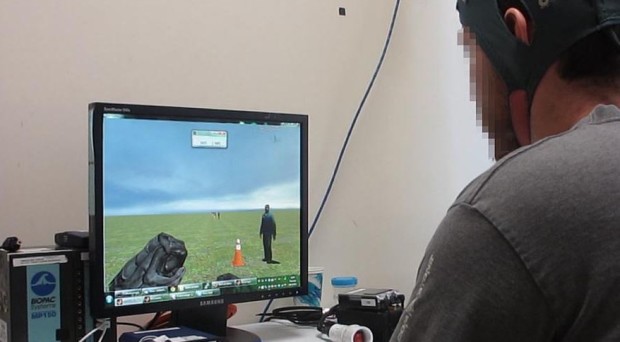
When I was a young girl, I would volunteer at the rehabilitation hospital where my mother worked, and I would often meet people of different ages with spinal cord injury. Many of these people were paralyzed and were unable to walk.
To enable someone to move in their environment, the doctors would typically prescribe wheelchairs. However, extensive use of wheelchairs is known to cause many medical problems for these individuals, so I have been actively searching for a way to restore walking.
Walking brainwaves
In order to restore walking in someone who has paraplegia, the brain needs to be able to control the individual’s legs to walk when they attempt or think about walking while bypassing their injured spinal cord.
To allow the brain to control walking, solutions will require the use of a brain-computer interface, where the brainwaves associated with attempted walking are recorded from the brain and used to control walking movements of their lower extremities.
The walking movements can be produced through devices such as a robot exoskeleton, or the electrical stimulation of their leg muscles to stand and walk. To accomplish such a goal, my colleagues and I have developed a brain-computer interface driven electrical stimulation system for overground walking, and we tested the system in a person with paraplegia due to spinal cord injury.
A successful brain-computer interface
The study we performed demonstrated that an individual with paraplegia is able to walk overground by attempting to walk to control the electrical stimulation of his leg muscles.
More importantly, the individual was able to walk and stand still using our system in real time, and could maintain a very high level of control over the course of several months. He could even carry a conversation while walking and standing with the device!
The YouTube video of the person using our system can be seen below.
The results of our study on a brain-computer interface driven electrical stimulation system show that our proof-of-concept study is an important step toward future technologies that can restore walking in paraplegic individuals after spinal cord injury.
If successfully tested in a larger population, it may lead to a safe test bed for a future implantable system that can fully restore walking to those with paraplegia.
Comments